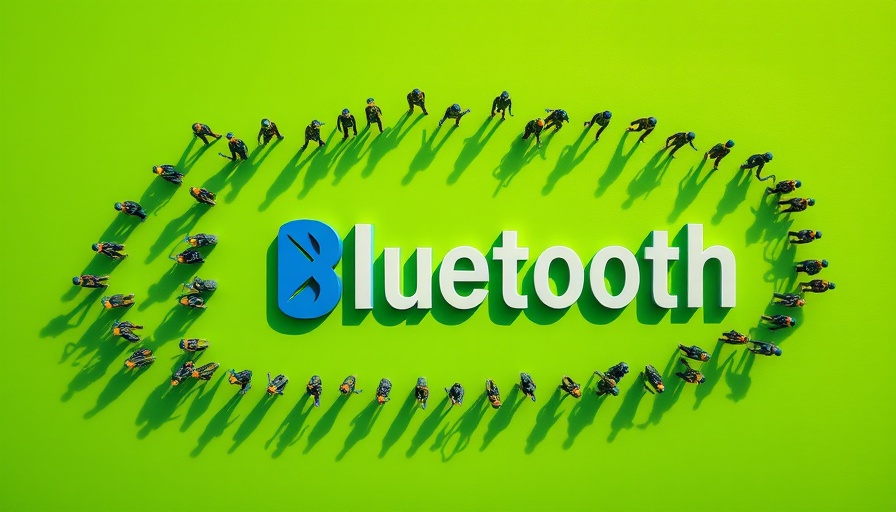
Understanding Bluetooth: A Fundamental Technology Behind Connectivity
In today’s tech-driven world, Bluetooth is a commonplace technology that powers countless connections, from headphones to smart devices. As Bluetooth evolves, understanding its utility, history, and future impact becomes essential for executives and decision-makers seeking to leverage its capabilities.
The Mechanism of Bluetooth Connectivity
Bluetooth operates by using high-frequency radio waves within the 2.4-GHz frequency band, similarly utilized by Wi-Fi. However, Bluetooth's adaptive frequency-hopping technology helps avoid interference from other devices, making it a robust and reliable choice for wireless communication. While Bluetooth might not match the speed of Wi-Fi, its low energy consumption and ease of use make it suitable for a vast array of personal and professional applications.
Historical Context: The Evolution of Bluetooth
Launched in 1998, Bluetooth has undergone significant transformations since its inception. Originally designed to replace RS-232 cables, it has become a versatile standard accommodating various devices and functionalities. The consistent backward compatibility means that newer devices can connect with older ones without losing core functionalities, which is essential for businesses that have invested in technology over the years.
Bluetooth in Business Strategy: Real-World Examples
Consider Apple’s AirDrop, a feature employing Bluetooth for device discovery before switching to Wi-Fi for data transfer. This dual-functionality highlights Bluetooth's role in enhancing productivity. Companies could similarly integrate Bluetooth-based solutions to streamline workflow, allowing for efficient sharing of data among employees and improving communication infrastructures.
Future Trends: What Lies Ahead for Bluetooth
As Bluetooth technology advances, the focus is shifting towards increased security and enhanced functionalities, such as the integration of ultra-wideband (UWB) technology for precise location-based services. Businesses that can leverage these emerging technologies will stand to gain a competitive advantage by improving service delivery and customer engagement.
Counterarguments: Addressing Common Misconceptions
Despite its advantages, some may argue that Bluetooth is prone to vulnerabilities and connection issues. While older versions faced significant security challenges, the latest iterations have significantly improved their safeguards. Awareness and education about these improvements can help assuage concerns while encouraging the adoption of Bluetooth in various sectors.
Actionable Insights: Integrating Bluetooth into Your Strategy
For executives looking to incorporate Bluetooth technology into their strategic framework, consider conducting an audit of existing devices and systems. Assess areas where Bluetooth can enhance workflows, improve connectivity, and bolster communication among teams. Focusing on innovative implementations can position your organization as a forward-thinking leader in your industry.
As Bluetooth continues to permeate every aspect of technology, understanding its dynamics can drive strategic decision-making and foster greater interconnectivity across devices and platforms. Embrace the opportunity to integrate Bluetooth and enhance your organizational efficiency.
 Add Row
Add Row  Add
Add 




Write A Comment